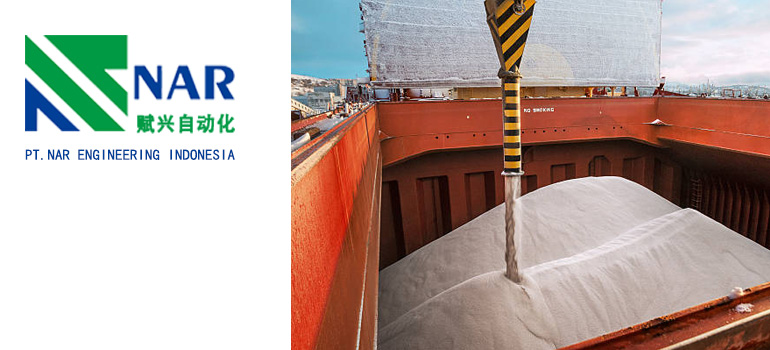In the field of modern logistics, bulk ship loading is a key link that directly affects transportation efficiency and cost control. This article will delve into how to optimize the bulk ship loading process to achieve efficient, safe, and worry free transportation solutions.
What is bulk ship loading?

“Bulk ship loading “is a term related to logistics and transportation, referring to the process of loading bulk cargo onto large bulk carriers. Bulk cargo refers to a large amount of cargo without bags, containers, or packaging, such as coal, ore, grains, petroleum, etc. These goods often appear in large quantities and require specialized equipment and procedures to efficiently load them onto ships for transportation.
The process of bulk ship loading typically involves the following key steps:
- Preparation of goods: Firstly, it is necessary to transport bulk goods from the warehouse or warehouse to the loading area. The goods should undergo necessary screening, grading, and pre-treatment to ensure their quality and suitability for loading.
- Loading equipment: In the loading area, special loading equipment such as loaders, conveyor belts, loading buckets, etc. are usually used to efficiently transport bulk cargo from the ground or warehouse to the ship’s cargo warehouse.
- Loading process: The loading equipment will transport the goods into the ship’s cargo warehouse. This may involve operations such as unloading, stacking, and distribution of goods, in order to evenly distribute them within the ship and maximize the utilization of available space.
- Stability and balance: During the loading process, it is necessary to consider the stability and balance of the ship. Different types of bulk cargo have different physical characteristics, so it is necessary to ensure that the ship remains stable after loading based on factors such as weight, volume, and density of the cargo.
- Record and inspection: During the loading process, it is usually necessary to keep records, including the quantity, quality, and other relevant information loaded. In addition, the loaded vessel will be inspected to ensure the safe loading of goods and the good condition of the vessel.
- Safety measures: Strict safety operating procedures need to be followed during the loading process to prevent accidents and personal injuries. This includes correctly operating loading equipment, following operating procedures, and using appropriate personal protective equipment.
Implementing efficient bulk cargo loading: key steps explained in detail
Key steps for efficient loading of goods:
- Classification and preparation of goods: Before starting loading, it is essential to classify and prepare the goods. Classify goods based on factors such as size, weight, and vulnerability to damage in order to better plan loading plans. At the same time, check the condition of the goods to ensure that they are not damaged or missing.
- Interior layout design: Design a reasonable interior layout based on the classification of goods. Place similar types of goods together to ensure a balanced center of gravity in the cabin and prevent instability or tilting.
- Inspection of loading and unloading equipment: Check the working status of the loading and unloading equipment, including cranes, conveyor belts, etc. Ensure the normal operation of the equipment to avoid delays caused by equipment malfunctions.
- Safety first: During the loading process, always prioritize safety. Provide necessary safety equipment for staff to ensure proper operation and prevent accidents.
- Reasonable loading sequence: Determine a reasonable loading sequence based on the destination and nature of the goods. Place the goods that require priority unloading in an easily accessible location to ensure a smooth unloading process.
- Cargo fixation and stability: Use appropriate fixing devices to ensure that the cargo remains stable during navigation. Avoid cargo sliding and collision, and reduce the risk of cargo damage.
- Marking and List: Clearly mark the goods and create a detailed list of goods. This helps onboard personnel to quickly identify and locate cargo, improving operational efficiency.
- Data recording and analysis: Record key data during the loading process, including loading time, loading sequence, cargo status, etc. Through data analysis, continuously optimize the loading process and improve transportation efficiency.
In today’s fiercely competitive logistics market, optimizing the process of loading bulk goods is one of the keys to success. By strictly following the key steps mentioned above, you can achieve efficient, safe, and worry free loading solutions, improve transportation efficiency, reduce costs, and ensure the safety of goods during transportation. If you have any more customized needs or questions, please feel free to contact us at any time. We look forward to customizing the best cargo loading solution for you.

